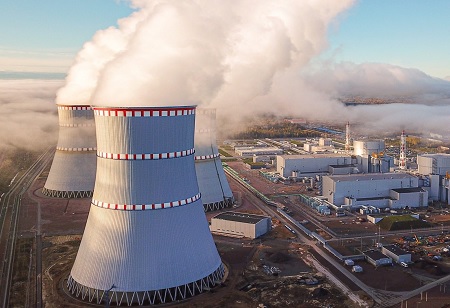
India's Nuclear Power Capacity to Reach 22,000 MW by 2031: NPCIL Chief

 In a significant move toward sustainable energy production, the Nuclear Power Corporation of India Limited (NPCIL) has set an ambitious goal of generating 22,000 megawatts of electricity by the fiscal year 2031-32.
In a significant move toward sustainable energy production, the Nuclear Power Corporation of India Limited (NPCIL) has set an ambitious goal of generating 22,000 megawatts of electricity by the fiscal year 2031-32.
NPCIL Chairman and Managing Director Bhuvan Chand Pathak stated that this initiative is aimed at bolstering the country's self-reliance in clean and environmentally friendly power sources. Speaking at the inauguration of the 32nd National Laser Symposium at the Raja Ramanna Centre for Advanced Technology (RRCAT), Pathak highlighted the strategic plan, which involves commissioning more than one nuclear plant annually to meet the set target.
Currently, 23 nuclear energy reactors contribute 7,000 MW of electricity, and with 19 new plants in various stages of progress, the organization aims to have them operational by 2026-27, demonstrating their dedication to making India self-sufficient.
In addressing environmental concerns linked to nuclear energy, Pathak emphasized that the NPCIL thoroughly considers ecological aspects before establishing nuclear power plants. He clarified misconceptions about the environmental impact of spent nuclear fuel, underscoring the meticulous storage and utilization procedures in place.
Currently contributing two percent to the total electricity generated in the country, NPCIL actively contributes to the national power supply. As part of their ongoing initiatives, the organization is actively engaged in developing the Chutka Nuclear Power Plant in Madhya Pradesh, spanning 1,200 acres. The state government's expected allocation of land for upcoming projects further strengthens the potential for additional nuclear plants.
At the 32nd National Laser Symposium, Prof Debabrata Goswami of IIT Kanpur highlighted the significance of laser technology in nuclear physics and research. The symposium, hosting experts from various fields, covered topics ranging from laser physics to applications in nuclear science, biology, and the medical industry. As a commitment to research and development, NPCIL collaborates with different institutions to advance laser technology, exploring areas such as laser materials, optoelectronics, quantum optics, and atomic optics.
During the symposium, a book was unveiled, and a laser technology industrial exhibition was inaugurated. With contributions from about 20 experts and nearly 300 research papers submitted, the event marked a notable stride in fostering collaboration and innovation within the laser technology domain. Dr. Shankar V Nakhe, the director of RRCAT, and SK Majumder from the Indian Laser Association also addressed the gathering.